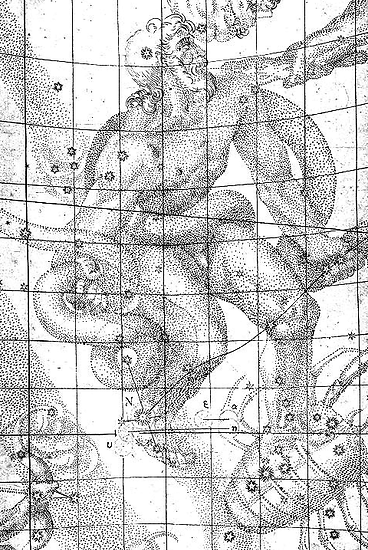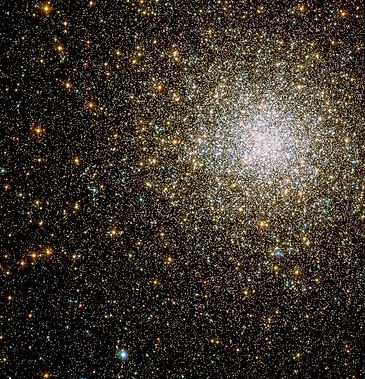Ophiuchus and its galactic and Universal connections


Johannes Keppler Drawing
As Ophiuchus does actually cross the ecliptic, as every other zodiacal constellation does, I add it here under signs.
Ophiuchus Alpha-Star is called Rasalhague (sometimes written Ras Al Haugue) with a magnitude of 2.07. The name comes from Arabic and means "the head of the serpent collector". The constellations "Serpens caput" and "Serpens cauda" are just left and right to Ophiuchus in modern astronomy. In ancient Babylonia the whole area was drawn/seen a bit differently and was called the "sitting god" or "serpent-god" (with snakes as legs). In Greek the constellation was associated with Apollo, struggling with a snake. Another "version" is, it to be associated with Asclepius (similar as Imhotep in Egypt), both were about medicine and travels.
Another beautiful part of the heavens with many star-clusters, nebulas and galaxies...
Rasalhague is pretty north of the ecliptic and also just on the cusp with sid. Sagittarius. Even so he embodies the essence of Ophiuchus, close conjunctions of most of our bodies with him are not so common.
Ophiuchus stands for gaining wisdom through "lived knowledge" and of course stands for "healing" - not only on the physical but also on the mental and spiritual planes. To integrate our shadows/fears (symbolized by the serpent) and to stand in the own truth/power and overcoming victim-consciousness (standing firmly "on the ecliptic" - I mean the ecliptic as the kind of "common path" or maybe "highway" here).

M62 - Messier 62
is located between Scorpio and Ophiuchus and lays south of the ecliptic.
When globular clusters form, they tend to be somewhat denser towards the center.
The more massive the cluster, the denser the center is likely to be.
With a mass with almost a million times that of the Sun, Messier 62 is one of the densest of them all.
With so many stars at the center, interactions and mergers occur regularly. Huge stars form and run out of fuel quickly, exploding violently and their remains collapse to form white dwarfs, neutron stars and even black holes!
(Credit picture and text: ESA/Hubble & NASA, S. Anderson et al)
Mythology related to Ophiuchus
Usually Ophiuchus is seen most in the stories of Asclepius the Healer and his Egyptian "equivalent" Imhotep (also an Architect).
Asclepius is famously linked to snakes / serpens - he was visited by snakes and taught the wisdom of healing and resurrection.
There's for sure a link to "life force energy" often called Kundalini.
As this force though, wanders along the spine, rising from the base towards the crown, there's though Scorpio itself involved too - it's in my view, a going together of the two constellations or principles here.
The Greek story of Achilles is though another one, strongly related to the Ophiuchus constellation.
Achilles was a very famous warrior and by his mother "bathed" in the Milky Way (Galactic Equator), so he would be invincible. As she hold him on his foot, that part wasn't protected - thus the term "Achilles heel" - it's also how he was actually defeated in the Trojan war.
Did you know, that a Scorpion mother is carrying her youngsters on her back until they are mature and "hardened enough to take care of themselves?
Yes, it's a very interesting fact and gives us a bit a different perspective into the story of not only Achilles but also Asclepius and the whole interpretation of the whole area called the 30 degrees of Scorpio and the individual constellations and stars.